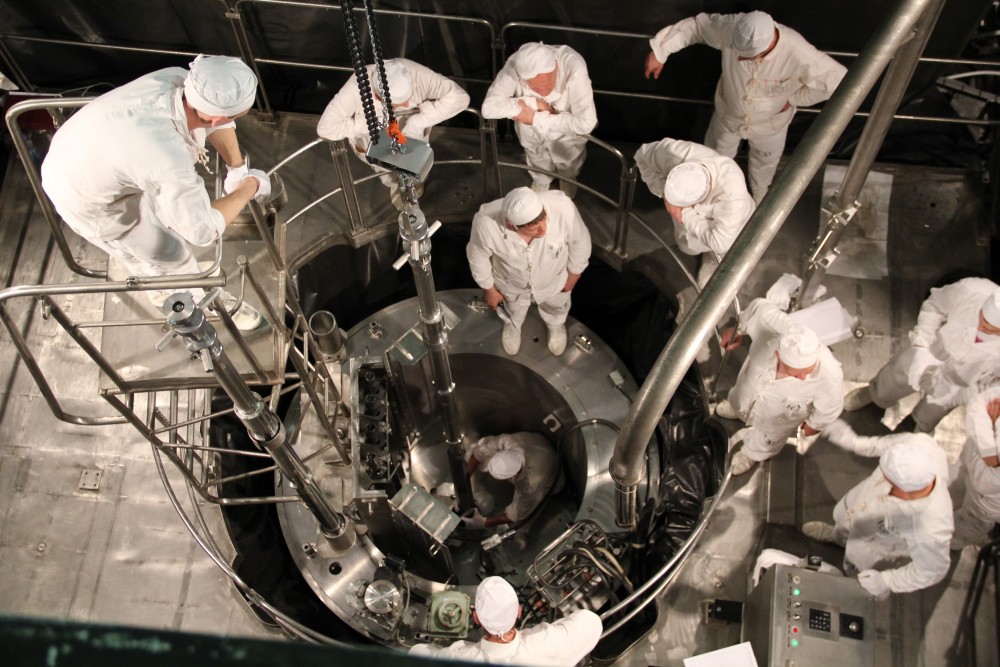Russia’s state nuclear corporation Rosatom has signed on to build four new floating nuclear power stations over the next six years to power mining ventures in Siberia’s far northeastern tip, marking a major advance in Moscow’s ambitions to promote a controversial energy source.
Russia’s state nuclear corporation Rosatom has signed on to build four new floating nuclear power stations over the next six years to power mining ventures in Siberia’s far northeastern tip, marking a major advance in Moscow’s ambitions to promote a controversial energy source.
The new waterborne facilities come on the coat tails of the Akademik Lomonosov, the audacious floating nuclear plant that Rosatom connected to a remote port in Chukotka in 2019 after spending more than a decade constructing it, amid objections from environmentalists.
The new deal, reported by official Russian newswires at the end of last month, would see the four plants deployed to the nascent Baimsky copper mining project, also in Chukotka, nearer Alaska than Moscow, by the end of 2026.
Under the $2 billion proposal, the corporation would construct three floating plants at St Petersburg’s Baltic Shipyard, each centered on a pair of 55 megawatt RITM-200 reactors –– the type featured in Russia’s new generation nuclear icebreakers ––to supply electricity to the mines.
 The proposed location of the four new floating nuclear plants at Chaunsakay Bay.
Credit: Google Maps
The proposed location of the four new floating nuclear plants at Chaunsakay Bay.
Credit: Google Maps
A fourth identical plant would be kept in reserve and rotate in when any of the original three require refueling or maintenance, Rosatom’s CEO Aleskei Likhachev told the official Tass newswire last week. He added that this fourth plant could also serve as a reserve unit for the Akademik Lomonosov, whose older KLT-40 reactors require refueling every 12 years.
The new deal confirms Russian media reports from May in which numerous government officials hinted President Vladimir Putin had given his nod to the plan. It also conforms to the wider ambitions of Rosatom, which have long circled around the notion of building a smaller, more streamlined version of the hulking Akademik Lomonosov, both for remote mining and hydrocarbon ventures and to market to foreign customers.
In December, the official Tass newswire quoted Russian politicians as saying numerous foreign countries are interested in acquiring what they call “optimized” floating nuclear plants. While it remains unclear precisely which countries those are, Rosatom has long claimed that unspecified governments in North Africa, the Middle East and Southeast Asia are interested in acquiring floating nuclear plants.
Tass also reported that Rosatom was in talks with Cuba about both land-based and floating reactors. The company also discussed the possibility of building a floating plant for Sudan in 2018.
The first two the four new floating nuclear plants are due at their working location on Chaunskaya Bay in the East Siberian Sea by 2026. Once there, they will be connected to powerlines spanning 400 kilometers to the Baimskaya mine. The third unit is due to be connected at the end of 2027, increasing the total power supply to about 330 megawatts.
Bellona has opposed Russia’s aspirations to build floating nuclear plants since the Akademik Lomonosov’ construction began in 2006, and has published a detailed catalogue of its concerns in a report it released in 2011.





